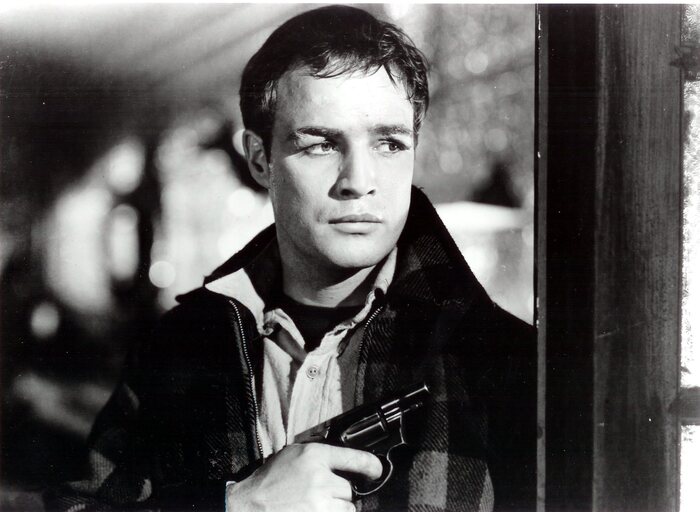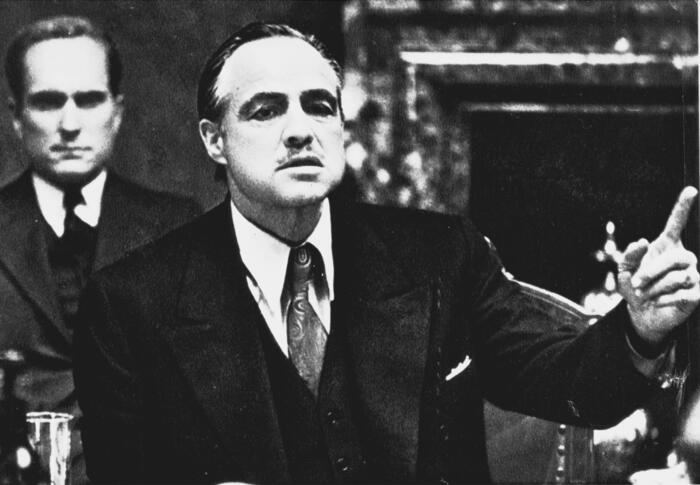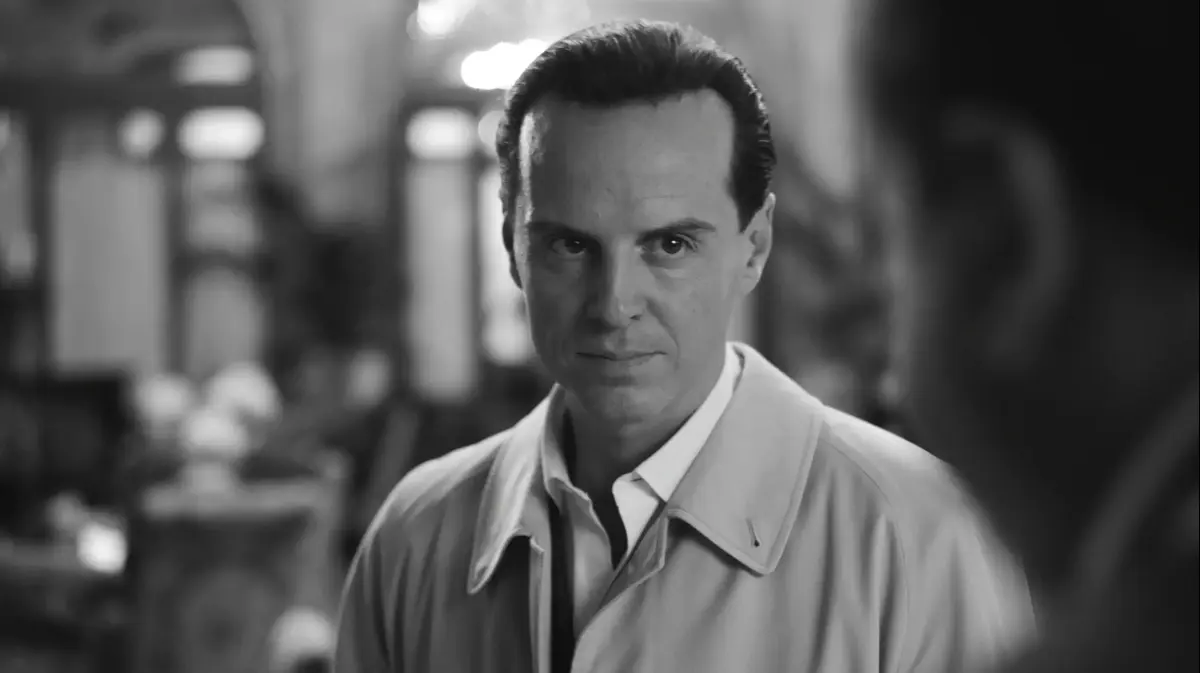Argentine boxing had 42 champions and 36 world champions since Pascual Pérez's initiatory consecration in 1954. However, The Walt Disney Company, through Star Original Productions, did not choose to rebuild the life of any of them, but that of a man that he did not even fight for an ecumenical title.
If he did, it was because in
Oscar Natalio Bonavena
found a character and a story that was too seductive for any audiovisual producer, which was finally captured in the seven episodes of
Ringo: Glory and Death
that will premiere next Friday on the Star+ platform.
The plot of the series directed by Nicolás Pérez Veiga (also a screenwriter along with Alejandro Ocón, Gabriela Larralde, Diego Palacio and Santiago Dulce) and starring
Jerónimo Giocondo Bosia
is structured around two temporal threads: on the one hand, the rise to stardom from
Ringo
;
on the other, the decline compacted in the last three months of his life.
There the boxer who was far from being brilliant and the star who built himself coexist in times when marketing was a word that almost nobody knew
in this part of the world and social networks, just a lysergic dream of some aspiring inventor.
Every time a list of the best heavyweight fighters in history was compiled, Bonavena did not even appear in the top 50.
Some analysts even place him below Luis Ángel Firpo and Santiago Alberto Lovell among the best heavyweights in Argentina (a country that never stood out for its contribution to that division), beyond the fact that during his career he faced four world champions (
lost
to Muhammad Ali, Joe Frazier, Jimmy Ellis and Floyd Patterson) and six other World Cup challengers (George Chuvalo, Zora Folley, Ron Lyle, Karl Mildenberger, Tom McNeeley and Gregorio Peralta).
However, that was not an obstacle for the flat-footed giant, who discovered this sport from the limitation that this condition marked for him to play soccer,
being a magnet for crowds
, both for those who adored him and for those who hated him. .
This is confirmed by the 30 blocks in line that formed to say goodbye to his remains in Luna Park,
after his murder in Reno on May 22, 1976 (when he was just 33 years old)
, or the caravan of 100,000 people, 50 cars and 20 crown bearers who accompanied the coffin to the Chacarita cemetery.
Twenty-five thousand two hundred and thirty-six spectators paid their tickets on September 4, 1965 to see his points victory over Gregorio Peralta at Luna Park that earned him the Argentine title.
And more than 5,000 stayed at the gates of the stadium.
Neither before nor after the Corrientes and Bouchard coliseum housed such a crowd.
Not even in the days of unforgettable duels like José María Gatica-Alfredo Prada or Eduardo Lausse-Andrés Selpa.
Oscar Bonavena and Gregorio Peralta summoned 25,236 people to Luna Park in 1965.
That night, most went to see the elegant and skillful
Goyo
, a gentleman above and below the ring, win.
But many of them
ended up applauding that petulant little boy of barely 22 years
who in the previous weeks had offended the man from San Juan even with televised provocations that today would be seen as child's play, but that then were the exclusive power of another young man who had what to do. Hold Them Up:
Muhammad Ali
.
Precisely the duel against Ali at Madison Square Garden in New York, which marked the high point of his sports career, was another example of the magnetism that Bonavena generated.
On Monday, December 7, 1970, the Canal 13 broadcast, with stories by Ricardo Arias from the stadium and comments by
Carlos Monzón, Amílcar Brusa and Eduardo Lausse
from the studio, reached 79.3 rating points.
It took 20 years for that record to be broken: the 1990 World Cup semifinal between Argentina and Italy brought the audience of Argentina Televisora Color (ATC) up to 81 points.
The defeat by technical knockout in the 15th episode, in a fight in which only the crown of the North American Boxing Federation was at stake (the American had been stripped of the world titles in 1967 for refusing to enlist in the Army of his country ), was transformed by the Argentine public into a moral victory.
Also his rival, who in the previous days had endured insults of all caliber, discovered a triumph at
Ringo
's show
that had earned him a purse of $150,000.
“We all laughed at him because we considered him a clown.
But he was laughing at all of us when he was on his way to the bank
,” Ali admitted years later.
The success and prerogatives that his status as an idol gave him allowed him to undertake artistic projects, without caring about his lack of resources for it.
In 1966,
he was part of the cast of the play
La Lechuguita y el Pato Volador
for six months , starring Zulma Faiad, Rafael Carret, Adolfo Stray and Juan Verdaguer at the El Nacional Theater.
There he told jokes and sang
“Pío, pío, pío;
pío, pío, pa”
, the song composed by Palito Ortega and Dino Ramos that he had recorded with Los Shakers (35,000 copies of that EP were sold).
“When
Ringo
walked on stage, the theater fell apart because of the way people wanted it.
He loved magazine theater, he was a naturally histrionic kid, ”
said Zulma Faiad
.
Oscar Bonavena with Alfredo Barbieri, Zulma Faiad, Adolfo Stray, Susana Brunetti and Juan Verdaguer at the El Nacional Theater.
Bonavena also participated in three films:
Impatient Boys
, by Julio Saraceni (1966);
Sunday Passion
, by Emilio Ariño (1970);
and
Los chantas
, by José Martínez Suárez.
He also made appearances in the television series
Carola and Carolina, the sisters vice versa
(1966), starring Mirtha and Silvia Legrand on Channel 13.
Although he was left wanting to star in
Ringo Sheriff
, a western parody created by Hugo Moser
that was going to to be directed by Héctor Ricardo García and in which the journalist José De Zer was also going to act.
Bonavena's defenders highlight his sporting milestones and highlight, in addition to his charisma, his good humor and unwavering affection for his family.
His detractors emphasize his recalcitrant machismo
(even above the standards of the time) and his racism, and question his admiration for General Alejandro Agustín Lanusse.
An outright anti-Peronist,
the boxer even invited the dictator to the family home on Treinta y Tres Orientales y Gibson to eat the famous ravioli made by his mother, Dominga Grillo
, during the de facto presidency of the military man.
Oscar Bonavena with Hugo Gatti and René Houseman in a photographic production for the magazine El Gráfico.
“If there were no blacks, I would not have become what I am. I won the best bags against the blacks. They are not better or worse, they are different. But I would not like to have a black in the family”
, he told Ernesto Cherquis Bialo in an interview published in El Gráfico in 1974. He was convinced that looks like his were absolutely justified, normal and shared.
“I think many think like me.
What happens is that some of us say things and others don't, ”he reasoned.
So who was Bonavena?
The jovial big man who laughed and made people laugh, who loved his children and considered her mother a saint?
Or the mouthy one who vilified his rivals to death and claimed that all blacks smelled bad?
A sea of contradictions inhabited the mammoth body of a man who was born and raised in Boedo, despite the fact that he was always identified with Parque Patricios (in October 2003 a statue of him was placed in front of the Huracán headquarters, in Caseros y Urquiza);
and that he set foot in a gym for the first time in San Lorenzo
(he was expelled from the club for urinating from a diving board in the pool)
, despite his fanaticism for the
Globo
(the cry "we are from the neighborhood, from the burning neighborhood; we are from the neighborhood by
Ringo
Bonavena”, became a classic for the burning fans after the consecration against
Goyo
Peralta).
Oscar Bonavena, a symbol for the Huracán fans despite the passing of time.. Photo: Marcelo Carroll.
The cinematographic life of the former Argentine champion, who is now used by Disney in his series, has already been the subject of other artistic approaches.
In literature, he was recovered in “Tell me
Ringo
”, the notable biography written by the journalist Ezequiel Fernández Moores, and in “
Ringo
y Joe”, by Omar López Mato.
And he was also part of the film
Love Ranch
, written by Mark Jacobson and starring Helen Mirren and Joe Pesci, which
tells the story of Joe and Sally Conforte, and the murder of the boxer
(played by the Spanish actor Sergio Peris-Mencheta).
On the other hand,
an Argentine film about the life of Bonavena
that was to be produced by Sebastián Ortega, directed by Carlos Sorín and starring Rodrigo de la Serna (the cast was to include Rita Cortese, Damián De Santo, , Fernán Mirás and Julieta Ortega).
The project did not come to fruition because in February 2009, shortly before filming began, the Spanish investors who were going to join the local production company Underground withdrew their economic contribution.
look too
"Glory and Honor 2": Luna Park shines again with the best boxing, five stellar fights and eight titles at stake
The night Ringo Bonavena gave a hell of a beating to a Nazi who ended up as a villain of Ghostbusters and Die Hard


/cloudfront-eu-central-1.images.arcpublishing.com/prisa/OMJAPDWL3LJ25DTNVISYZOUYII.jpg)




